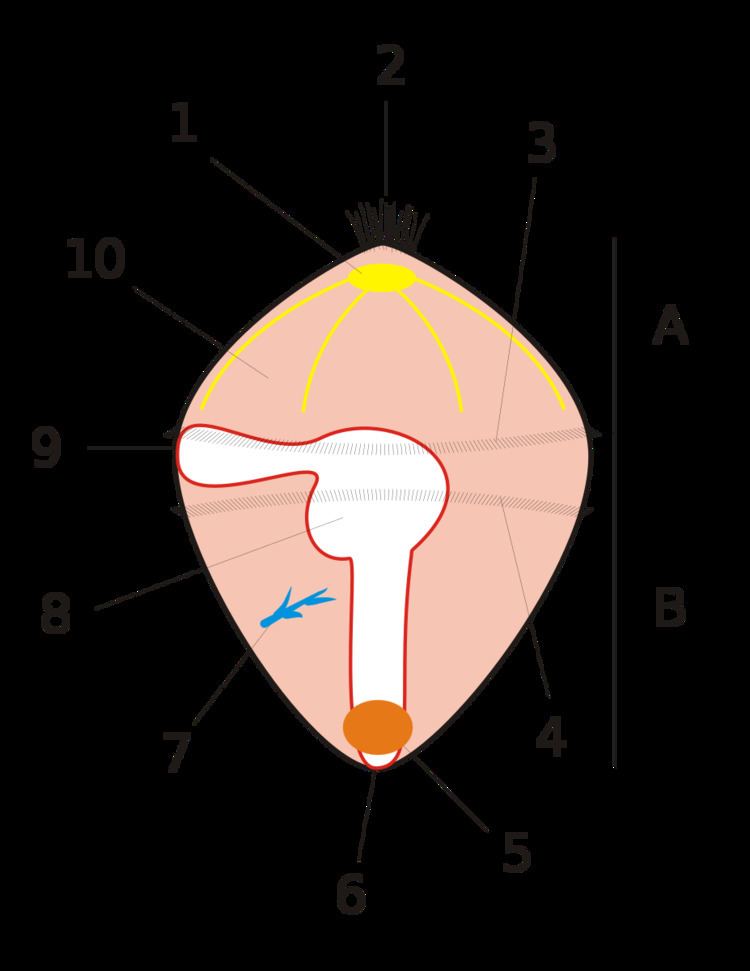 | ||
A trochophore (/ˈtroʊkəˌfɔər, ˈtrɒ-, -koʊ-/; also spelled trocophore) is a type of free-swimming planktonic marine larva with several bands of cilia.
Contents
By moving their cilia rapidly, a water eddy is created. In this way they control the direction of their movement. Additionally, in this way they bring their food closer, in order to capture it more easily.
Occurrence
Trochophores exist as a larval form within the trochozoan clade, which include the entoprocts, molluscs, annelids, echiurans, sipunculans and nemerteans. Together, these phyla make up part of the Lophotrochozoa; it is possible that trochophore larvae were present in the life cycle of the group's common ancestor.
Etymology
The term trochophore derives from the ancient greek τροχός (trókhos), meaning "wheel", and φορέω (phoréō), meaning 'to bear, to carry', because the larva is bearing a wheel-shaped band of cilia.
Feeding habits
Trochophore larvae are often planktotrophic; that is, they feed on other plankton species.
Life cycle
Image of development of the annelid Pomatoceros lamarckii (family Serpulidae) showing the trochophore in images D-F
D - early trochophore
E - complete trochophore
F - late trochophore
G - metatrochophore
